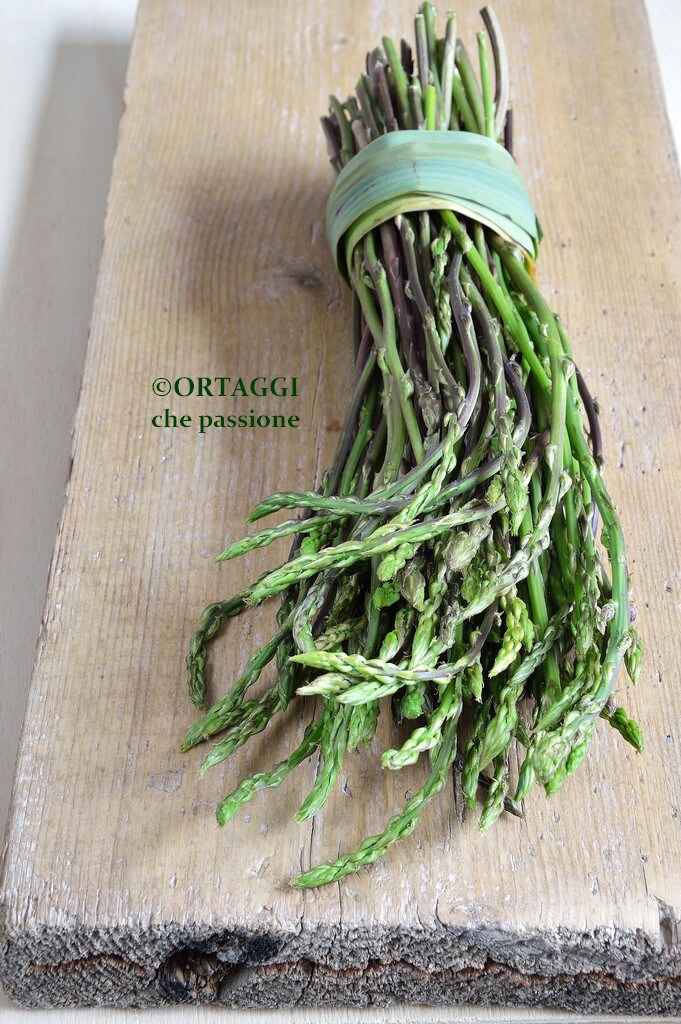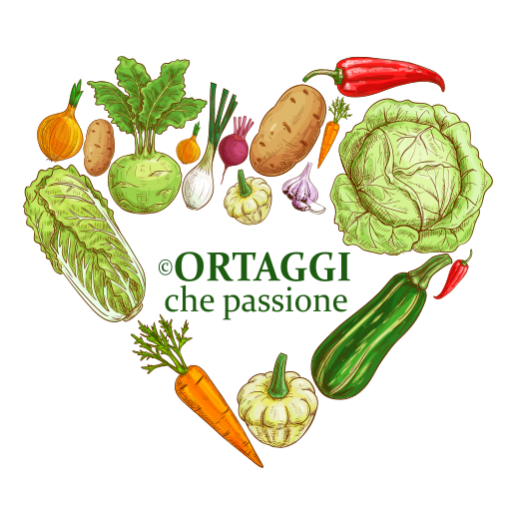The wild asparagus is a sprout, a spontaneous herb with a thin stem pleasantly bitter and much tastier than the common asparagus.
What is their price? If personally collected in nature their cost is zero, while their selling price is generally high and can vary from 10 to 28 euros per kilo.
Can they be cultivated? Here is a video to learn their natural cultivation using the Fukuoka method.
Is the harvesting regulated? It depends on the location, some Italian regions like Tuscany, Sicily, and Veneto have issued regulations to precisely establish the period and maximum per capita quantity of harvesting. It is necessary to inquire if in your area or municipality it is necessary to have a permit for harvesting.
Other names: asparagina, woodland asparagus, field asparagus, prickly asparagus, thorny asparagus, sparasine.
Do not confuse with bruscandoli (less jagged and thinner), butcher’s broom sprouts (with smoother and purple tips) or salicornia (the sea asparagus found in salt marshes).
Where to find them? They grow in the countryside, in uncultivated meadows, in the Mediterranean scrub, in clearings, in rows, along hedges, and in woods even above one thousand meters in central and southern Italy. In the north, they are rarer and prefer hills and more sheltered and mild areas. They do not grow in northern regions (like Trentino Alto Adige, Piedmont, Valle d’Aosta), where mountain asparagus (goat’s beard) can be found. Here are the photos to recognize them in the sprout state (edible) and as adults (poisonous).
How to recognize wild asparagus? The plant is a spontaneous and perennial herb, developing underground with a dense network of rhizomes. The edible part is its aerial shoots (young sprouts), thin and specifically its tender green and sometimes purple tip. The stem closer to the ground is woody and thorny.
Discover their properties and nutritional values with nutritionist Maria F. Buccinnà: “wild asparagus is rich in fibers that help absorb less fat and sugar contained in meals and stimulate digestion, preventing constipation and bloating. They are excellent sources of antioxidant vitamins, particularly A, C, E, and some of the B group, and minerals such as phosphorus, potassium, and chromium. Additionally, these vegetables are rich in saponins, molecules that inhibit the proliferation of colon cancer cells. The concentration of these beneficial molecules is much higher in wild asparagus than in cultivated ones. These compounds have a recognized nutraceutical activity along with flavonoids responsible for the diuretic activity. To keep these molecules’ properties intact, wild asparagus should not be boiled in water. Saponins are extremely resistant to heat but soluble in water. For this reason, it is preferable to consume asparagus raw, as a salad, quickly sautéed in a pan or grilled and seasoned with a lemon, garlic, and parsley dip.“
Contraindications: they contain acetylsalicylic acid (increases uric acid) and are therefore not recommended for those suffering from gout, kidney, or urinary problems.
WILD ASPARAGUS SEASONALITY: the best period is from March to June, in southern Italy they can be found as early as January or even earlier. It is preferable to pick them at the beginning of the season as they are more tender, over time they tend to become hard.
RECIPES with cultivated asparagus

- Difficulty: Easy
- Cost: Medium
- Preparation time: 5 Minutes
- Portions: 1 Person
- Cooking methods: Boiling
- Cuisine: Healthy
- Seasonality: Winter, Spring
- Energy 36.36 (Kcal)
- Carbohydrates 3.64 (g) of which sugars 3.64 (g)
- Proteins 4.18 (g)
- Fat 0.18 (g) of which saturated 0.00 (g)of which unsaturated 0.00 (g)
- Fibers 2.00 (g)
- Sodium 4.55 (mg)
Indicative values for a portion of 4 g processed in an automated way starting from the nutritional information available on the CREA* and FoodData Central** databases. It is not food and / or nutritional advice.
* CREATES Food and Nutrition Research Center: https://www.crea.gov.it/alimenti-e-nutrizione https://www.alimentinutrizione.it ** U.S. Department of Agriculture, Agricultural Research Service. FoodData Central, 2019. https://fdc.nal.usda.gov
Wild Asparagus RECIPES
- 3.53 oz wild asparagus
Tools
- Set steamer
Wild Asparagus RECIPES
How to clean wild asparagus? Cleaning them is very simple, just remove their harder base (break them with your hands until you find resistance) and any possible thorns, then wash them well.
Do not waste the harder part: it can be boiled along with pasta or rice water to add flavor.
BOILING
🍀 steam cooking for about 7 minutes
🍀 steam cooking in a pressure cooker for 2 minutes
🍀 in boiling salted water for 5 – 10 minutes
COOKING
🍀 in the oven: arrange them in a single layer on a baking tray, season with a drizzle of oil, a little salt, and some spices. Optionally, a sprinkle of breadcrumbs and/or vegan cheese. Bake at 356°F for 15 minutes.
🍀 en papillote: wrap them in a parchment paper parcel with other vegetables: thinly sliced onions, some cherry tomatoes, or julienne-cut carrots – pumpkin – zucchini. Bake at 356°F for 20 minutes.
How to season boiled asparagus?
🍀 with a drizzle of extra virgin olive oil and white vinegar, balsamic or lemon juice.
🍀 gently melt vegan butter in a small pan along with your favorite spice (turmeric, nutmeg, paprika, pepper, chili, ginger), pour it hot over the green asparagus, sprinkle with nutritional yeast flakes or vegan cheese.
WILD ASPARAGUS as a vegetarian side dish
🍀 RAW in salad, the tender new sprouts.
🍀 Blanched and seasoned in a salad with onion, tomatoes, and cheese flakes.
🍀 Fritters or battered and fried.
🍀 Grilled.
🍀 Baked, cooked in a parcel with little salt and oil for 10 minutes at 392°F, at the end of cooking they can be sprinkled with some parmesan.
🍀 Sautéed in a pan with a drizzle of oil or a knob of butter and melting cheese.
🍀 Sautéed in a pan with a drizzle of oil or a knob of butter and melting cheese.
As a main course for everyone
As a main course for everyone
As a main course for everyone
🍀 Served with hard-boiled eggs, fried eggs, poached or scrambled.
🍀 Omelet or farifrittata with asparagus
🍀 Pizza with asparagus cream and shrimp
🍀 Plumcake with asparagus and ricotta
🍀 Hard-boiled eggs with asparagus cream
🍀 Hard-boiled eggs with asparagus cream
Sauces for pasta or risotto
Sauces for pasta or risotto
Sauté directly the tender sprouts cut into pieces in a pan (blanch only the harder shoots beforehand), with:
🍀 oil, garlic, and chili, add prosciutto if desired
🍀 asparagus and onion
🍀 asparagus and shrimp
🍀 asparagus and guanciale
🍀 asparagus and gorgonzola with a little milk
🍀 asparagus with mushrooms and bacon
🍀 asparagus with sausage and eggs
🍀 asparagus and tomato sauce (or cherry tomatoes)
🍀 bread cooked with asparagus
Additionally
🍀 Use as a cream like pesto. Add grilled fish pieces if desired.
🍀 In lasagna.
🍀 Add the tips to spaghetti with garlic, oil, and chili.
🍀 Risotto with asparagus and creamed with egg yolk.
🍀 Black rice with an asparagus cream and sautéed calamari.
🍀 Quinoa risotto with asparagus and toasted almonds.
🍀 In soups as pieces or blended in creamy soups.
🍀 In soups as pieces or blended in creamy soups.
As an appetizer
🍀 Blended with creamy cheese like crescenza, mascarpone, robiola, or ricotta: spread the obtained cream on hot bread crostini.
🍀 On crostini with pecorino and guanciale.
STORING
Once collected and before being cooked, they can be stored in a jar full of water for a few days before consuming.
Freeze wild asparagus: boil them for a few minutes and once cold, place them in freezer bags. They can be stored in the freezer for up to 3 months.

